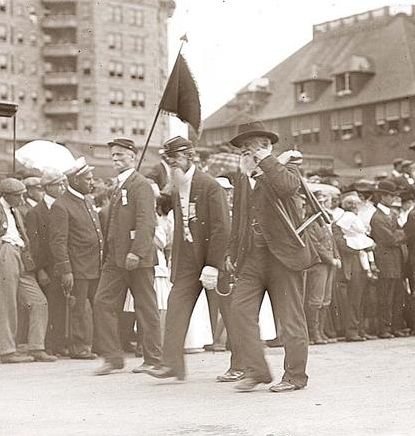The Civil War
The Other Greatest Generation
The Other Greatest Generation
Memorial Day is a federal holiday in the United States for remembering the people who died while serving in the country's armed forces.
The holiday, which is observed every year on the last Monday of May, originated as Decoration Day after the American Civil War in 1868, when the Grand Army of the Republic, an organization of Union veterans founded in Decatur, Illinois, established it as a time for the nation to decorate the graves of the Union war dead with flowers.
By the 20th century, competing Union and Confederate holiday traditions, celebrated on different days, had merged, and Memorial Day eventually extended to honor all Americans who died while in the military service. It typically marks the start of the summer vacation season, while Labor Day marks its end.
The first widely publicized observance of a Memorial Day-type observance after the Civil War was in Charleston, South Carolina, on May 1, 1865. During the war, Union soldiers who were prisoners of war had been held at the Hampton Park Race Course in Charleston; at least 257 Union prisoners died there and were hastily buried in unmarked graves.
Together with teachers and missionaries, black residents of Charleston organized a May Day ceremony in 1865, which was covered by the New York Tribune and other national papers. The freedmen cleaned up and landscaped the burial ground, building an enclosure and an arch labeled "Martyrs of the Race Course". Nearly 10,000 people, mostly freedmen, gathered on May 1 to commemorate the war dead. Involved were about 3,000 school children, newly enrolled in freedmen's schools, as well as mutual aid societies, Union troops, black ministers and white northern missionaries. Most brought flowers to lay on the burial field.
David W. Blight described the day:
The Other Greatest Generation
 |
| Grand Army of the Republic James R. Carnahan Department Commander 1882-1883. |
 |
| Grand Army of the Republic parade |
 |
| Click to Enlarge Grand Army of the Republic Post, Cazenovia, NY, c. 1900. . In this, and the photo below, Black Union vets stand side by side with their white brothers in the same GAR Post. |
 |
| Click to Enlarge Grand Army of the Republic Dumont Post No. 18 |
Marching Through Georgia
Hurrah! Hurrah! we bring the jubilee!
Hurrah! Hurrah! the flag that makes you free!
So we sang the chorus from Atlanta to the sea
While we were marching through Georgia.
Hurrah! Hurrah! the flag that makes you free!
So we sang the chorus from Atlanta to the sea
While we were marching through Georgia.
We'll Fight for Uncle Sam
Och, sure, we never will give in, in any sort of manner,
Until the South comes back agin, beneath the Starry-Banner;
And if John Bull should interfere, he'd suffer for it truly;
For, soon the Irish Volunteers would give him Ballyhooly.
Until the South comes back agin, beneath the Starry-Banner;
And if John Bull should interfere, he'd suffer for it truly;
For, soon the Irish Volunteers would give him Ballyhooly.
 |
| A GAR Black Post |
 |
Former slave and GAR Member Charles H. Anderson, age 92,
Photo about 1936-38.
|
 |
| Taken in 1862 during the American Civil War, Lieutenant George Custer sits with his charges from the 2nd U.S. Cavalry in this colorized photograph. |
 |
| General John Logan General Logan proclaimed the first "Decoration Day" to honor the fallen soldiers of the American Civil War. He served the state of Illinois as a State Senator, a Congressman, a U.S. Senator and was an unsuccessful candidate for Vice President of the United States with James G. Blaine in the election of 1884. |





No comments:
Post a Comment